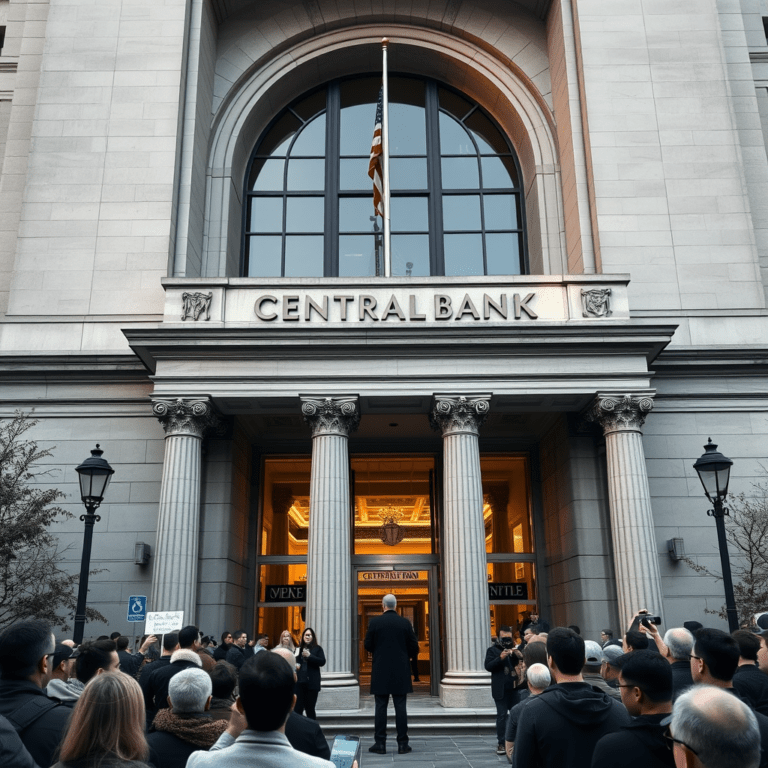Debt Spiral Solutions: A Deep Dive with James Lavish
With United States national debt surpassing $35 trillion, understanding effective debt spiral solutions is crucial for anyone wanting to navigate these turbulent times. In today’s murky financial waters, the concept of a debt spiral looms large, often leaving us feeling like we’re balancing on a tightrope of economic instability. A recent episode from the “State of Bitcoin” podcast hosted by Green Candle featured expert James Lavish, who dove deep into the intricacies of this pressing issue.
What is the Debt Spiral?
Before we explore potential solutions, it’s essential to grasp what constitutes a debt spiral. Simply put, a debt spiral occurs when a government’s continuous borrowing leads to an ever-increasing total debt, resulting in higher interest payments and more borrowing in a vicious cycle. This is like a hamster wheel — the more you run, the further you get from your goal.
Understanding How We Got Here
The roots of our current debt crisis can be traced back to 1971, when President Nixon ended the gold standard, allowing for unfettered money printing. Since then, this has created an environment where the government can accumulate vast amounts of debt without immediate repercussions.
Eye-Opening Statistics
To give you a clearer picture, let’s break down some numbers:
- National Debt: Approximately $35 trillion
- Unfunded Liabilities: Over $218 trillion
- 2024 Projected Tax Revenue: Estimated at $4.9 trillion
- 2024 Projected Government Spending: Estimated at $6.9 trillion
Based on these figures, we expect an annual deficit of about $2 trillion, exacerbating our debt situation.
The Role of Government Spending in the Debt Spiral
Government spending is often the root cause of the debt spiral. Programs like Social Security, Medicare, and defense expenditures now consume a hefty portion of the federal budget.
Key Budget Components
- Mandatory Spending: Roughly $4.1 trillion
- Defense Budget: About $950 billion
- Annual Interest Payments: Over $1 trillion
This means that our government operates like a “zombie company” — it can’t pay its existing debts without acquiring new ones, perpetuating the debt spiral.
Debt Spiral Solutions
So, how do we break free from this cycle? Lavish discusses three primary debt spiral solutions:
1. Austerity Measures
One immediate solution is implementing austerity measures, although this is politically fraught and unpopular.
- Political Fallout: Cutting funds to programs can lead to significant public backlash and loss of electoral support.
- Historical Precedents: Countries like Greece faced severe social strife during austerity measures implemented in the 2010s.
2. Increase Taxes
Another potential solution is raising taxes. However, this route comes with its own set of problems.
- The Laffer Curve: Higher taxes can diminish revenue by stifling productivity. For example, if businesses face higher taxes, they may shrink their workforce and scale back operations.
- Political Impact: Politicians might lose favor with constituents who feel overburdened by taxes.
3. Borrow More Money
Finally, the government could opt to continue borrowing. This solution is often the path of least resistance.
- Debt Growth: Excessive borrowing can lead to hyperinflation, which reduces the dollar’s value.
- Market Confidence: If the populace loses faith in the dollar, this could lead to a severe financial crisis.
The Federal Reserve’s Influence on Debt Solutions
Another critical player in this game is the Federal Reserve. Its dual mandate — to maintain price stability and full employment — can impact how effective debt spiral solutions are.
Key Roles of the Federal Reserve
- Control Inflation: Keeping inflation around 2% is central to the Fed’s mission.
- Adjust Money Supply: The Fed manages interest rates to control borrowing and spending, but these actions are often reactionary and influenced by lagging economic data.
Political Factors Affecting Debt Solutions
The political landscape adds another layer of complexity to implementing robust debt spiral solutions. Politicians often focus on short-term gains over long-term stability, which can exacerbate the situation.
The Debt Ceiling Issue
The often-referenced debt ceiling has become more of a political ploy than a genuine control mechanism. It gets raised repeatedly without effective measures to curb spending, essentially allowing government to continue its borrowing spree.
What Are the Long-Term Implications?
While the solutions might offer temporary relief, they are not foolproof. Continuous borrowing can lead to a weakened dollar, and if inflation spirals out of control, we could face severe economic consequences.
When it comes to tackling the debt spiral, understanding these solutions is invaluable. Whether through austerity, tax increases, or further borrowing, there are no easy answers. Education and awareness are crucial as we advocate for responsible practices and policies that pave the way for a sustainable economic future.







